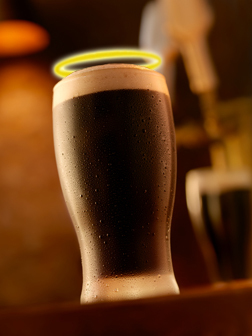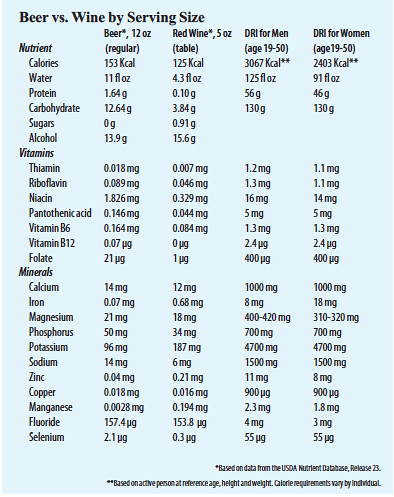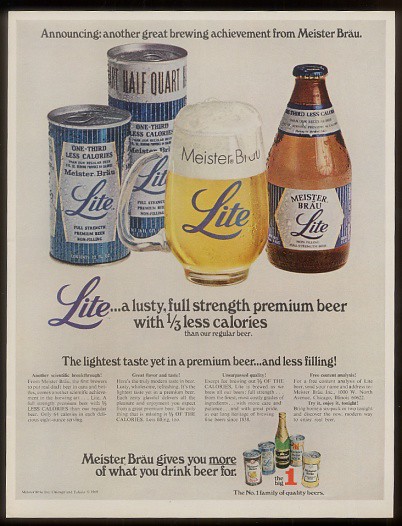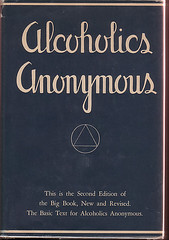
At first glance I thought my pals at Alcohol Justice (AJ) got their hooks in the Center for Disease Control and Prevention (CDC), because I don’t know anyone better at making up behaviors that cry out for personal responsibility that are ascribed to society (for the cost) and business (for the fault). Their absurd “charge for harm” campaign, which seeks to make alcohol companies, the businesses that sell their products, and the communities that they live in wholly responsible for the personal decisions and behavior of a minority of people who abuse alcohol, seems to have been swallowed whole in a new study, apparently by the CDC, that was recently published in the American Journal for Preventative Medicine. That study, not surprisingly, was the subject of a recent AJ press release, CDC Releases New Cost Study: Excessive Alcohol Use Cost the U.S. $223.5 Billion in 2006, which they summarize:
Of the total costs, 72.2% ($161 billion dollars) is attributed to lost productivity in the workforce. The remaining costs are attributed to healthcare (11%), criminal justice (9.4%), and effects such as property damage (7.5%). While the CDC has had strong data on premature deaths caused by alcohol consumption (79,000 annually, with an estimated 2.3 million years of potential life lost each year), it last performed an economic cost analysis in 1998, when the annual cost was estimated to be $184.6 billion.
While $223.5 billion dollars is a massive number — almost 3 times what the federal government spent on pre-primary through secondary education in 2010 — the authors of the study believe that it is a substantial understatement of the true costs of alcohol use in the United States. They recommend “effective interventions to reduce excessive alcohol consumption—including increasing alcohol excise taxes, limiting alcohol outlet density, maintaining and enforcing the minimum legal drinking age of 21 years, screening and counseling for alcohol misuse, and specific countermeasures for alcohol- impaired driving such as sobriety checkpoints.” With the national cost of alcohol consumption ringing in at nearly $2 per drink, we could not agree more.
Of course they couldn’t agree more, it’s catnip to their agenda and I wouldn’t be surprised to find a closer link to the study that has not been disclosed since it seems so much like a self-fulfilling prophecy of their own propaganda with conclusions that so closely mirror their own proposals to “fix” alcohol abuse at the expense of the majority of responsible drinkers and local craft brewers who positively affect their local economies and communities. And my instinct turns out to be true, though not with AJ, but because this study “was supported by generous grants from the Robert Wood Johnson Foundation to the CDC Foundation.” For me, that’s the smoking gun. If you don’t know who the Robert Wood Johnson Foundation is, they’re the mother of all neo-prohibitionist groups, and they fund most of the other ones, setting the agenda for a majority of other anti-alcohol organizations nationwide. Supposedly, AJ no longer accepts donations from the Robert Wood Johnson Foundation, though when I asked when they stopped receiving support from them, I never got an answer.
But a closer look at the study reveals that the charges it ascribes to “society” are not actually borne by society at large, at least to my way of thinking, but instead are paid privately by the individuals who supposedly abused alcohol or the private companies that employ them. To me, that makes them false statistics because they say one thing that turns out to not actually be true. So let’s look as those numbers of societal “costs.” Here’s the breakdowns, according to AJ’s press release:
- 72.2%: Lost productivity in the workforce
- 11%: Healthcare
- 9.4%: Criminal justice
- 7.5%: Property damage
Okay, the biggest expense blamed on alcohol abuse is “lost productivity in the workforce,” accounting for nearly three-quarters of the total, or about $161 billion. But unless they work for the government (and there’s no data on what percentage might) the costs, it seems to me, would be paid by the private companies they work for. And if they continually show up late, hungover or so they can’t do their job, how many would remain employed for an extended period of time? However you slice it, that’s not me or society paying for the poor performance of that binge-drinking employee. I suppose you could argue that a company filled with such people might result in higher prices passed along to consumers, but any such company that doesn’t weed out employees who don’t perform their jobs well is most likely going to go out of business for other reasons, as well.
The other lost productivity category is early mortality by alcohol-abusers. These people apparently selfishly die before they can do enough work to be considered to have paid their debt to be a member of society. But if you drink yourself into an early grave, your unfinished work or debt to society has got to be the least of your troubles. It’s more likely that the reasons for your early demise have multiple causes, many of which were probably not addressed by the society who was as responsible for you as they claim you were to country, state, community and family. I honestly can’t see how you can total dollar amounts for work undone by one individual, when undoubtedly another person stepped in and did it instead. I don’t mean to sound cold, but with unemployment so high, when a position becomes available under such circumstances, I feel confident that there will be someone to take that job and get the work done. So how does that cost society anything?
But let’s also look at the number itself, $161 billion. GDP at the end of 2006 (the same timeframe as this study) was $13.58 trillion. That makes this “cost to society” 1.19% of GDP. Not only is that a pretty small percentage though, even if true, nothing in their reasoning suggests it’s anything close to the truth.
The next highest cost is from healthcare. But again, unless the binge drinker has no health insurance and doesn’t pay his own medical bills, how is society paying? For those with insurance, their policy pays their medical bills, and whatever isn’t covered under their policy they become personally responsible for. I admit that it’s more likely that a person who abuses alcohol, and may not be able to keep down a job, might not have health insurance, but in the only civilized nation without universal healthcare I would argue that’s more a failure of our society than a cost to it. Whoever ends up paying for the medical care of binge drinkers, it seems more likely it will be insurance companies first, responsible individuals second, and, if at all, society last.
Third, criminal justice apparently accounts for 9.5%. What is meant by “criminal justice” includes $73 billion, of which “43.8% came from crash-related costs from driving under the influence, 17.2% came from corrections costs, and 15.1% came from lost productivity associated with homicide. Other categories include fire loss, crime victim property damage and “special education” about “fetal alcohol syndrome.” In the full text of the study, Table 2 lists who they think is responsible for all these costs, whether the government, the drinker and his family or society (though I should point out how that was arrived upon is completely absent from the study). Given that the entire study supposedly claims the “cost of excessive alcohol consumption in the United States in 2006 reached $223.5 billion,” you’d think that the personal costs even they admit to would not be a part of the total at all. Even by the CDC study’s own admission, 41% of the costs they claim are to society, are actually “paid” by the individual drinker (and his family). That’s almost half that don’t appear to be a cost to society as a whole. How does that not call into question their methodology and/or their conclusions?
But many of these other categories seem plain silly. Fire loss and property damage? Those are crimes, whether or not the person perpetrating them was drinking or not. To say it’s alcohol-related if they had a drink before they robbed someone seems as ludicrous as including a car accident in which the passenger was drinking in drunk driving statistics (which actually has been routinely done). And corrections? If you’re in jail for a crime you committed, yes that’s a cost to society, but that’s a cost we’ve all agreed is supposed to be borne by society, like the police and fire departments. It’s not like there’s some special jails that don’t count or count double if the criminal had a drinking problem. It’s really just a way to inflate the numbers and, as usual, make the problem with alcohol abuse seem far worse than it is.
And while I’m on that subject, let’s briefly mention how absurd the very definition of a “binge drinker” is in compiling these statistics, too. I’ve written about this many times, such as in Inflating Binge Drinking Statistics, Son of Binge Drinking Statistics Inconsistencies and Inventing Binge Drinking.
Lastly, “property damage,” which is really “other effects,” is listed as 7.5% of the harm blamed on alcohol. This is very confusing, because in the study’s Table 1, “criminal justice” is actually listed under “other effects” so I’m not sure what AJ is up to with their list. So I’ve actually addressed property damage above here, though Table 1 also includes a separate column for “crime-related” so the row for “criminal justice” is 100% “crime-related” so I’m not sure what’s being doubled-up on, but surely something is odd, if not intentionally.
The other factors not accounted for, as usual, are any positive effects of alcohol. Although both the study and AJ makes a big deal about what negative effects they couldn’t quantify, they’re completely unconcerned about any omitted positive ones. Certainly there are economic benefits for local communities as well as society at large. But even ignoring those, this “study” undoubtedly does not take into account how total mortality is improved by moderate, responsible drinking as set forth in the most recent FDA dietary guidelines, as well as a number of scientific studies and meta-studies that have shown the same thing. How many people who do drink moderately as part of a healthy lifestyle actually save society money because of their responsible behavior, which includes a drink or two daily?
It also doesn’t take into account how many crimes are prevented or stress relieved which might otherwise have led to “costs to society” because a person had a drink or two and calmed down, relaxed and decided not to do something rash, stupid or illegal. Given that the majority of people who drink alcohol do so responsibly and do not cost society anything, even by these absurd standards, it seems likely a lot more “costs” are actually prevented by moderate alcohol consumption. So where’s the balance? As even this “study” admits, “[m]ost of the costs were due to binge drinking — it’s the subtitle of the CDC’s press release — although the CDC claims “[e]xcessive alcohol consumption, or heavy drinking, is defined as consuming an average of more than one alcoholic beverage per day for women, and an average of more than two alcoholic beverages per day for men, and any drinking by pregnant women or underage youth.”
Of course, that’s at odds with the most recent dietary guidelines that the FDA released, which “defines ‘low-risk’ drinking as no more than 14 drinks a week for men and 7 drinks a week for women with no more than 4 drinks on any given day for men and 3 drinks a day for women.” But the anti-alcohol groups didn’t like that definition, and they gave the money for this study to be done, so they can safely ignore anything that doesn’t fit the conclusion they paid for. Why the government is so hot to be in bed with anti-alcohol factions is a bit trickier, but I feel confident money and control are at the root. The CDC’s handling of autism research has made me more than a little suspect of their motives and their ties to the medical industry and academic institutions.
But the larger picture is the question of Societal Costs vs. Personal Costs for alcohol. Few other products sold in America are as demonized as alcohol and it remains one of the few that continues to be blamed en masse for the actions of a minority of people who abuse it. Whatever harm they do personally is writ large across the entire spectrum of consumption, as if everybody who drinks is a bad person costing society its moral compass and leading us down the mother of all bad roads. We are becoming the scapegoats for all of society’s ills. Make no mistake about it, there are people who want a return to prohibition and the groundwork is being laid as we speak to try it again. And we know how well it turned out the last time. But we should be honest about it. Everything we do costs society something, but only alcohol is singled out to pay for the small number of people who abuse it. It’s a question of weighing the good with the bad and what’s best for a majority of people. Given that the vast majority of people are responsible drinkers who enjoy both drinking alcohol and the rituals that go along with it, I’d say that society has always been better off when its populace could have a beer. And that’s good both for the individual and society as a whole.










